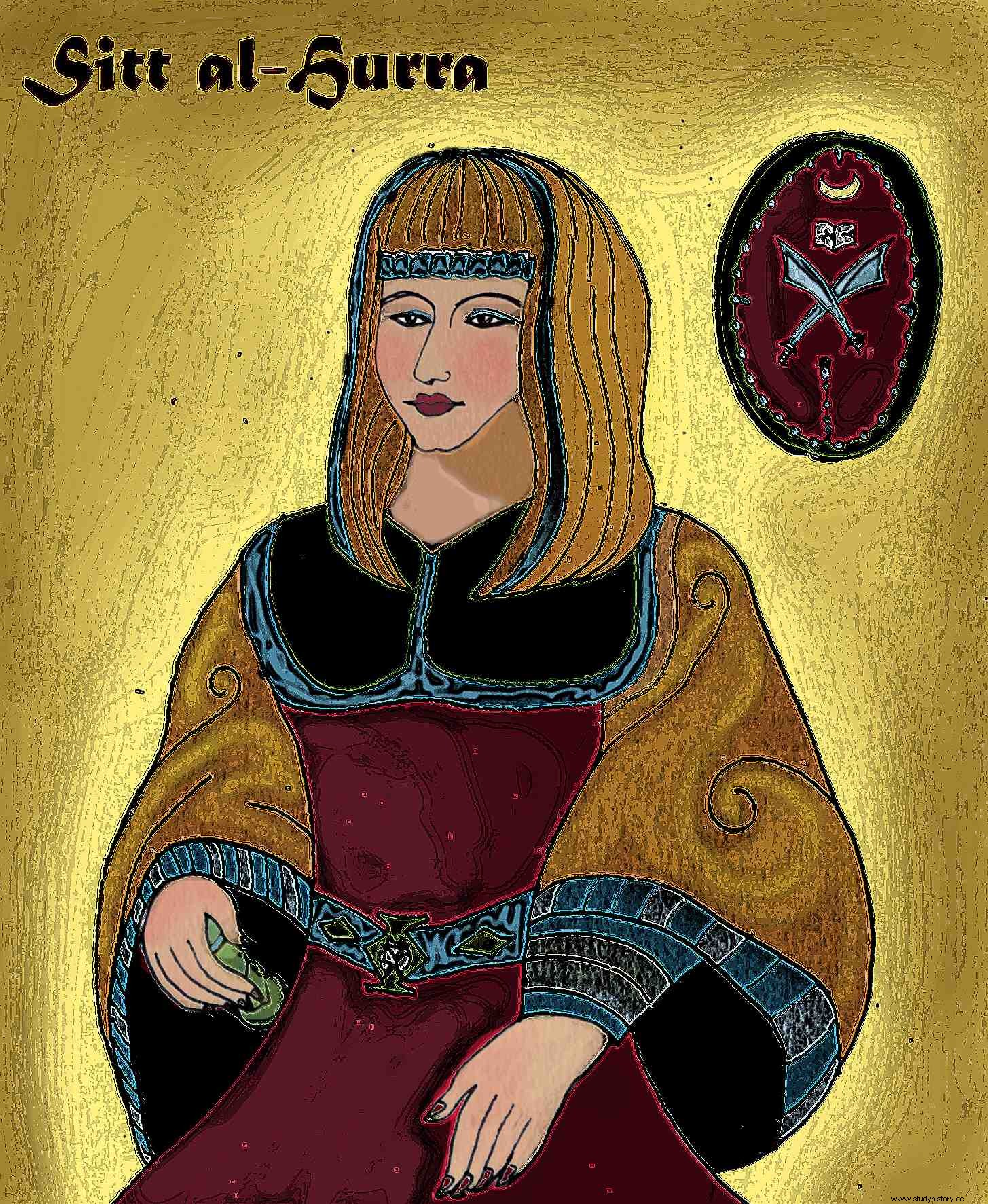Sayyida al-Hurrah bint Ali ibn Rashid , known as Sayyida al Hurra (1485 – 1542), was a queen of the city of Tetouan (Morocco), who reigned for thirty years, fought against the Portuguese and resorted to piracy.
“The free”
 Sayyida al-Hurra was born around 1485 (around the year 890 of the Muslim calendar) in the Kingdom of Granada (current southern Spain), within a noble Muslim family. We do not know her real name, Sayyida al-Hurra being a title meaning "Noble lady" or "the sovereign who bows to no authority". His father, prince of the sultanate of Wattassides, reigns on the current Chefchaouen (Morocco). During the Reconquista by Ferdinand the Catholic and Isabella the Catholic of the Kingdom of Granada, he fought the Spaniards but ultimately had to flee with his family to Chefchaouen. Sayyida grew up there in safety, yet marked by this exile.
Sayyida al-Hurra was born around 1485 (around the year 890 of the Muslim calendar) in the Kingdom of Granada (current southern Spain), within a noble Muslim family. We do not know her real name, Sayyida al-Hurra being a title meaning "Noble lady" or "the sovereign who bows to no authority". His father, prince of the sultanate of Wattassides, reigns on the current Chefchaouen (Morocco). During the Reconquista by Ferdinand the Catholic and Isabella the Catholic of the Kingdom of Granada, he fought the Spaniards but ultimately had to flee with his family to Chefchaouen. Sayyida grew up there in safety, yet marked by this exile.
At sixteen, Sayyida al-Hurra married al-Mandri, a friend of her father thirty years older than her, whom she assisted in his affairs. On his death in 1515, she succeeded him as governor of the city of Tetouan in northern Morocco and earned the nickname of al-Hurra, meaning "the free".
Punitive expeditions
Very marked by the loss of the Kingdom of Granada, Sayyida al-Hurra allied with the Turkish corsair Arudj Reïs Baba-Oruç known as Barbarossa to lead punitive expeditions against the Spaniards and the Portuguese. While Barbarossa roams the eastern Mediterranean, Sayyida al-Hurra's fleet controls the west. Their names are feared by Spaniards and Portuguese while their expeditions quickly become an important source of income, thanks in particular to the ransoms demanded in exchange for the release of prisoners. Sources then mention that it is with Governor Sayyida al-Hurra that the release of the hostages is being negotiated.
Her actions brought Sayyida al-Hurra such renown that in 1541, King Ahmed al-Wattassi of Morocco proposed to her. Contrary to custom, it is he who makes the trip for the wedding to take place in Tetouan; sources say the governor requested the move to prove her intent to continue ruling regardless. She effectively continued to reside and govern in Tetouan, until her son-in-law overthrew her the following year.
Stripped of her possessions, power and glory, Sayyida al-Hurra's fate, including the date and circumstances of her death, is subsequently unknown.
